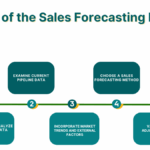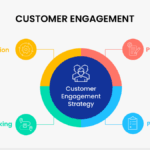Introduction
In today’s competitive business landscape, attracting new clients is just one part of the equation. Retaining existing clients and nurturing their loyalty is where long-term profitability lies. It costs significantly more to acquire a new customer than to keep an existing one, making client retention a crucial pillar of sustainable growth.
Client retention is not just about keeping customers — it’s about turning them into long-term advocates who choose your services repeatedly and recommend you to others. In this article, we’ll explore proven strategies that help businesses enhance client retention and build unwavering customer loyalty.
1. Prioritize Exceptional Customer Service
Customer service is the foundation of retention. When clients feel heard, respected, and valued, they are more likely to stay.
Tips:
- Respond to inquiries promptly.
- Offer consistent and helpful support.
- Personalize interactions to show clients they’re not just another number.
- Empower your team with the tools and training to resolve issues quickly and efficiently.
2. Deliver Value Consistently
Clients remain loyal to businesses that continuously meet or exceed their expectations.
How to deliver consistent value:
- Understand what your clients need most and align your services accordingly.
- Regularly evaluate and improve your offerings.
- Provide useful insights, updates, or tools that help clients reach their goals.
3. Foster Open and Honest Communication
Clear, transparent communication builds trust—an essential ingredient in client loyalty.
Best practices:
- Keep clients informed about changes, updates, or potential issues.
- Ask for feedback regularly and act on it.
- Be honest when mistakes occur and offer timely solutions.
4. Implement a Loyalty or Rewards Program
Incentivize repeat business by rewarding loyal clients. This could be through discounts, exclusive content, priority service, or gifts.
Examples of loyalty incentives:
- Points-based systems
- Referral bonuses
- Early access to new products or services
These gestures show appreciation and encourage continued engagement.
5. Personalize the Client Experience
Generic interactions can leave clients feeling undervalued. Personalization strengthens relationships.
How to personalize effectively:
- Use names in communication.
- Tailor content, offers, or services based on past behavior.
- Remember important dates like client anniversaries or milestones.
This attention to detail builds emotional connection and long-term satisfaction.
6. Maintain Regular Engagement
Stay top-of-mind by keeping regular contact with your clients—even when you’re not selling.
Ways to engage regularly:
- Send newsletters or updates with helpful content.
- Schedule periodic check-ins.
- Share industry news or trends that matter to them.
Proactive communication can position your business as a trusted partner, not just a service provider.
7. Track and Act on Customer Behavior
Data offers valuable insight into what clients want, need, and expect.
Track metrics such as:
- Purchase frequency
- Support requests
- Website visits or engagement
- Feedback and reviews
Use this information to spot trends, anticipate needs, and improve service quality.
8. Build Long-Term Relationships, Not Just Transactions
Treat each client interaction as part of a larger relationship. Go beyond the transaction to show you care.
Ideas:
- Send thank-you messages or handwritten notes.
- Offer post-purchase support or onboarding.
- Remember personal details, where appropriate.
Loyalty grows when clients feel a genuine connection.
9. Offer Ongoing Education or Support
Help your clients get the most out of your product or service by providing continued education and support.
You could offer:
- Tutorials and how-to guides
- Webinars or workshops
- One-on-one coaching sessions
Empowering clients increases their satisfaction and deepens their commitment.
10. Ask for and Act on Feedback
Clients want to know their voice matters. Asking for feedback demonstrates that you value their opinion, and acting on it shows you’re listening.
Implement this by:
- Sending follow-up surveys
- Holding feedback sessions or check-ins
- Publicly acknowledging client suggestions when implemented
This strengthens relationships and improves retention outcomes.
Conclusion
Client retention and loyalty are built through trust, value, communication, and consistent care. By implementing the strategies outlined above, businesses can not only keep clients longer but also turn them into passionate advocates. When clients feel valued, understood, and supported, they become the foundation of lasting success.
requently Asked Questions (FAQs)
Q1: Why is client retention more important than acquisition?
A: Retaining clients is more cost-effective and often leads to higher lifetime value. Loyal clients are also more likely to refer others and contribute to stable revenue growth.
Q2: How can I measure client retention?
A: You can calculate retention by comparing the number of customers at the end of a period to the number at the start, excluding new acquisitions. Customer churn rate is another key metric to watch.
Q3: What’s the best way to collect feedback from clients?
A: Use surveys, email follow-ups, or direct conversations. Keep it simple, respectful of their time, and act on their input where possible.
Q4: How do I know if my loyalty program is working?
A: Track engagement metrics such as repeat purchases, program participation, and customer satisfaction. Positive trends typically indicate success.
Q5: Can automation help with client retention?
A: Yes. Automation can streamline communication, track customer behavior, send reminders, and personalize experiences—all of which support retention efforts when used thoughtfully.



